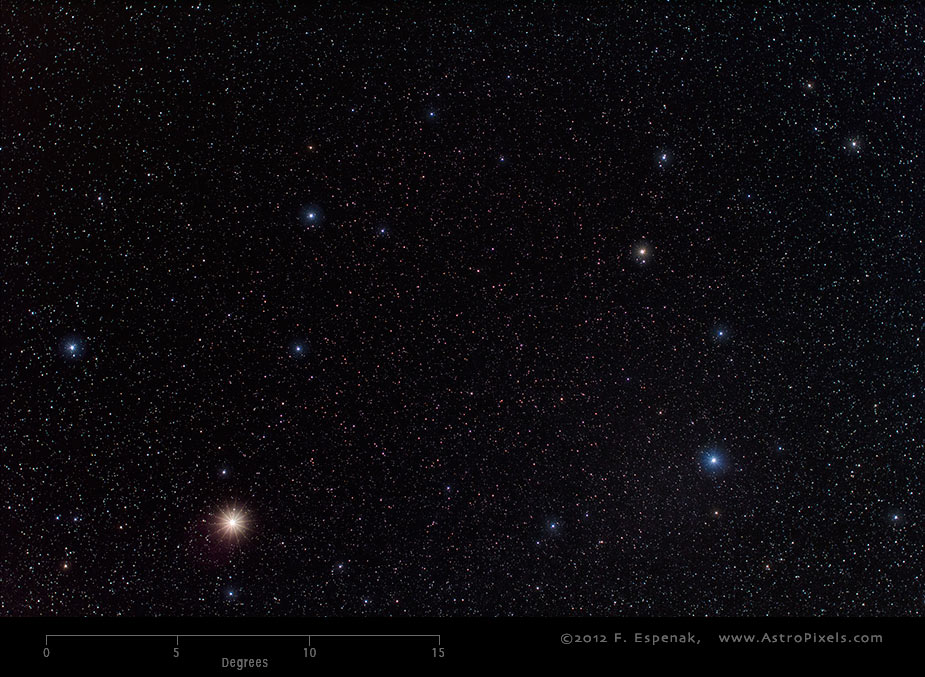Leo - 1
Leo is a Zodiacal constellation otherwise known as the Lion. It is one of the 48 Greek constellations originally described by the 2nd century astronomer Claudius Ptolemy (Wikipedia). Leo remains one of the 88 modern constellations defined by the International Astronomical Union (Wikipedia).
Leo (abbrev. = Leo; genitive = Leonis) covers 947 square degrees or 2.30% of the celestial sphere making it the 12th largest constellation. It contains 123 stars brighter than apparent magnitude 6.5, the brightest star being Regulus (Alpha Leonis). See the Leo Star Chart for a figure illustrating this constellation including the identification of its brighter stars.
The bright redish star in the image above (to the lower left) is the planet Mars. For another image of the 2012 conjunction of Mars in Leo, see Leo and Mars.
For more information see the entries for Leo at Wikipedia and U. Wisconsin. For a chart of Leo, see Leo (IAU).
Technical Details
- Object: Leo
- Date/Time: 2012 Feb 21 at 06:21 UTC
- Location: Bifrost Astronomical Observatory, Portal, AZ
- Mount: Losmandy G-11 German Equatorial Mount
- Lens: Nikkor AI 35mm f/2
- Camera: Canon EOS 550D (Rebel T2i)
- Field of View: 35.3° x 24.0° at 24.5 arc-sec/pixel (web version: 138 arc-sec/pixel)
- Exposure: 360s, f/4, ISO 800 and 120s, f/4, ISO 800 with Cokin A840 Diffusion Filter
- File Name: Leo-01w.jpg
- Processing (Adobe Camera Raw): Color Balance, Vignetting, Noise Reduction
- Processing (Photoshop CS5): Average Layers, Curves, opacity (with diffusion image)
- Original Image Size: 3454 × 5179 pixels (17.9 MP); 11.5" x 17.3" @ 300 dpi
- Rights: Copyright 2012 by Fred Espenak. All Rights Reserved. See: Image Licensing.
